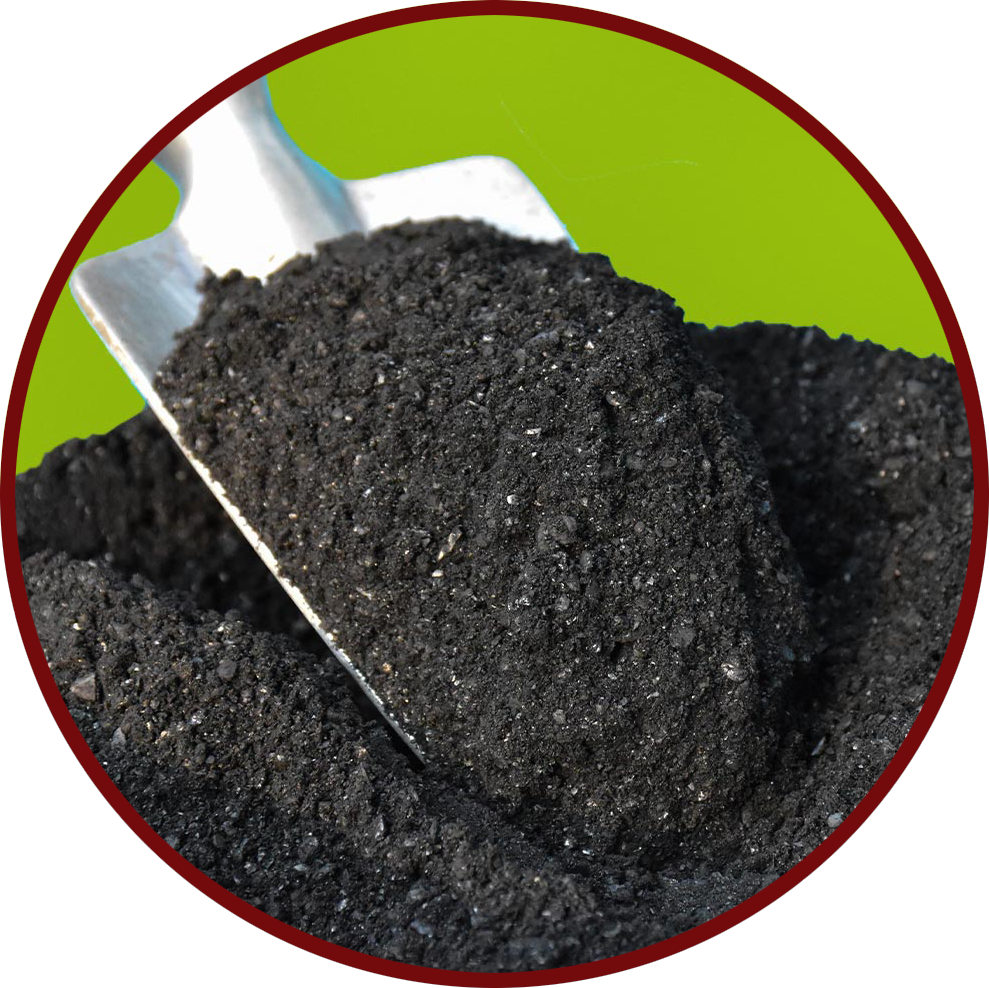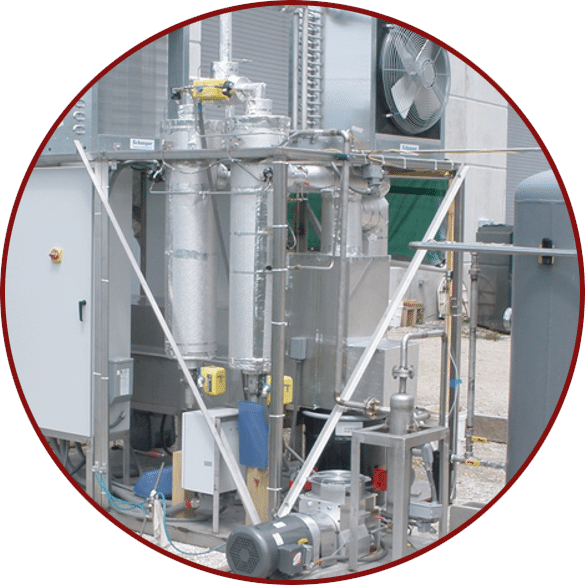NON-LABILE BIOCHAR
Highly Resistent to Decomposition in Soil fOr longer Agricultural Benefits
NON-LABILE
BIOCHARHighly Resistent to Decomposition in Soil for longer Agricultural Benefits
Non-Labile (Persistent) Biochar

Non-Labile (Persistent) Biochar


Biochar in Our Biofertilizer
Biochar in Our Fertilizer

How we make Biochar

How we make Biochar

Biochar within a soil amendment gives increased crop yield and improved soil quality.
Biochar is a carbon sink that absorbs more carbon from the atmosphere than it releases. One ton of biochar absorbs 3.7 tons of carbon dioxide.
One ton of biochar offsets the annual emissions of about two passenger cars
Biochar improves the soil’s nutrient binding and water retention capacity and adds to the soil’s porosity.
Can bind/absorb hazardous chemicals and compounds, such as heavy metals and pesticides.
It has a great water retention capacity and can bind five times the amount.
OREGON R&D FACILITY

OREGON R&D FACILITY

What Is Biochar & Why does HiPoint add it to Biofertilizer
Biochar systems are complex and require further research and life cycle analysis to understand the opportunities and risks associated with them in developing countries. Four main factors need to be considered:
1. Impacts on soil health and agricultural productivity, such as soil pH, nutrient availability, soil moisture, soil organic matter, and the amount of biochar applied.
2. Impacts on climate change, including carbon storage and stabilization, which are the most important factors for climate change mitigation efforts based on biochar. Biomass cookstoves are significant sources of black carbon, which could have a global impact on the climate and human health. The risks of negative climate impact related to biochar lie primarily in the negative feedback that may occur during biochar production and application, such as emissions of methane and nitrous oxide during inefficient pyrolysis and degradation of soil organic matter after biochar application.
ref: greenfacts.org edited AI to shorten
3. Social impacts, including effects on energy, health, economics, and food security. Biochar use can reduce pressure on wooded ecosystems and decrease the burden of fuel gathering. Improved cookstoves can also reduce indoor air pollution throughout the developing world, especially for women and children. In addition, biochar systems could help buffer practitioners against crop shortages and hunger by improving crop yields or crop resilience. The energy produced from biochar could potentially be used for critical functions such as the refrigeration of vaccines, water pumping, and lighting after sunset. Risks of biochar use can include potential emission of toxins and inhalation of dust and small particulate matter.
4. Competing uses of biomass. The use of dedicated energy crops for biochar production could divert food crops for fuel production, divert arable land from food crops, and affect direct and indirect land use change. The costs and benefits must, therefore, be weighed, of leaving biomass in situ versus using it to produce biochar that is then added to the soil. Biochar is one of the few GHG reduction strategies that can actually withdraw carbon dioxide from the atmosphere. It has significant advantages but can have an overall net climate impact.
What Is Biochar & Why does HiPoint add it to Biofertilizer
Biochar systems are complex and require further research and life cycle analysis to understand the opportunities and risks associated with them in developing countries. Four main factors need to be considered:
1. Impacts on soil health and agricultural productivity, such as soil pH, nutrient availability, soil moisture, soil organic matter, and the amount of biochar applied.
2. Impacts on climate change, including carbon storage and stabilization, which are the most important factors for climate change mitigation efforts based on biochar. Biomass cookstoves are significant sources of black carbon, which could have a global impact on the climate and human health. The risks of negative climate impact related to biochar lie primarily in the negative feedback that may occur during biochar production and application, such as emissions of methane and nitrous oxide during inefficient pyrolysis and degradation of soil organic matter after biochar application.
3. Social impacts, including effects on energy, health, economics, and food security. Biochar use can reduce pressure on wooded ecosystems and decrease the burden of fuel gathering. Improved cookstoves can also reduce indoor air pollution throughout the developing world, especially for women and children. In addition, biochar systems could help buffer practitioners against crop shortages and hunger by improving crop yields or crop resilience. The energy produced from biochar could potentially be used for critical functions such as the refrigeration of vaccines, water pumping, and lighting after sunset. Risks of biochar use can include potential emission of toxins and inhalation of dust and small particulate matter.
4. Competing uses of biomass. The use of dedicated energy crops for biochar production could divert food crops for fuel production, divert arable land from food crops, and affect direct and indirect land use change. The costs and benefits must, therefore, be weighed, of leaving biomass in situ versus using it to produce biochar that is then added to the soil. Biochar is one of the few GHG reduction strategies that can actually withdraw carbon dioxide from the atmosphere. It has significant advantages, but the overall net climate impact of biochar requires a full life-cycle assessment to determine whether it is beneficial or not.
